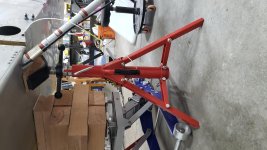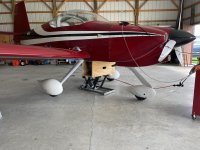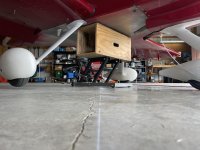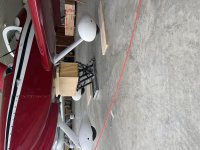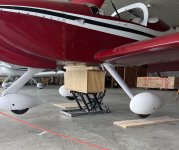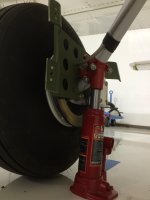Doug Rohrer
Well Known Member
I use a HF jack on a welded steel frame with homemade cup and cone into the tiedown hole. But it is important to angle the jack so the jack piston is perpendicular to the bottom of the wing or it will try to walk off. The angle changes as the wing goes up.

